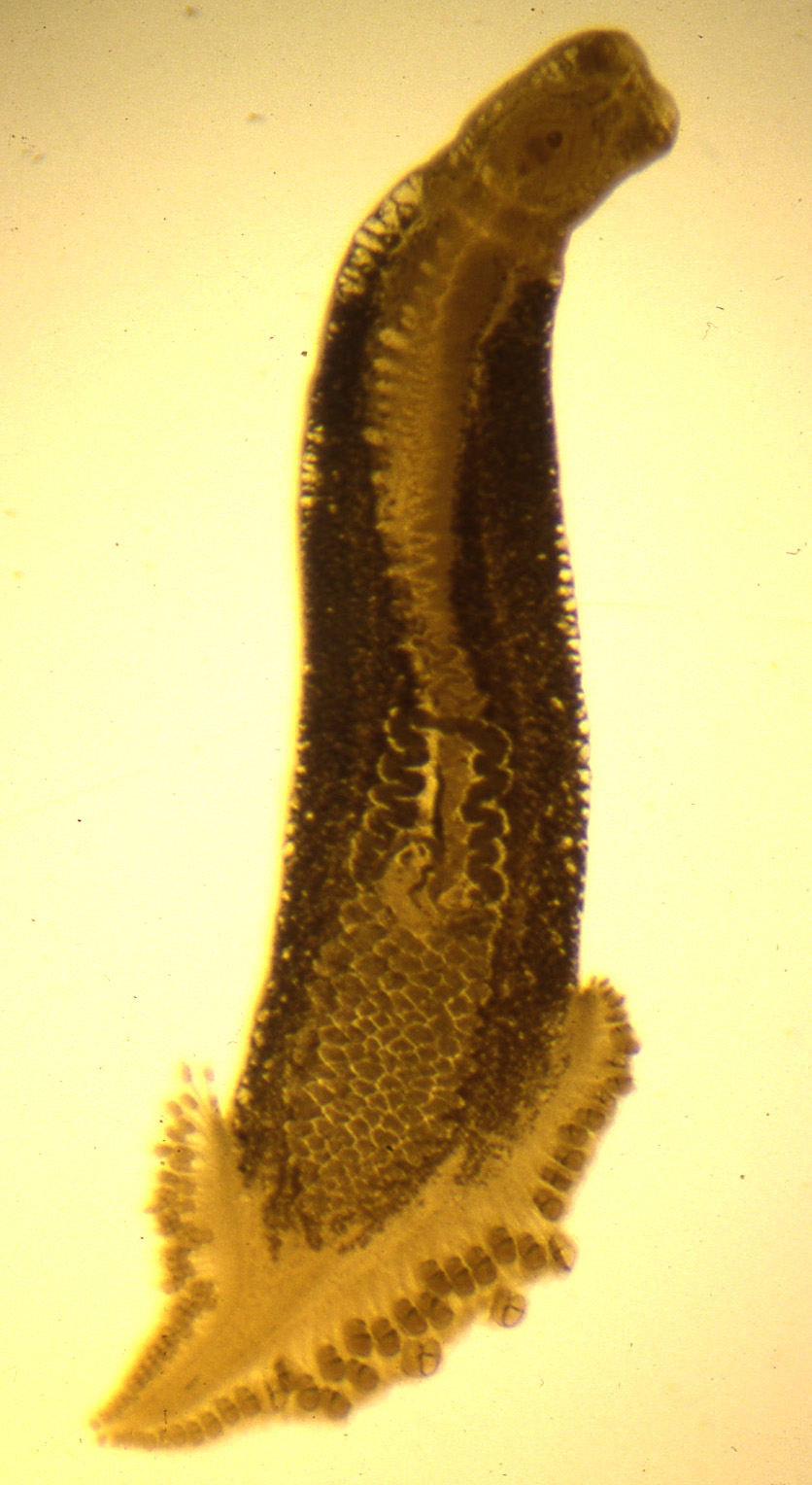

| Parasite | Zeuxapta japonica |
|---|---|
| Taxonomy | Plathyhelminthes, Monogenea, Polypisthocotylea |
| Hosts | Greater amberjack (Seriola dumerili), Yellowtail amberjack (Seriola lalandi) |
| Infection site | Gill |
| Clinical signs | No external signs are evident. The parasite (max. ca. 9 mm) attaches the gill filaments. The gills become pale and anaemic by blood-feeding of the parasite in heavy infection. |
| Parasitology | The parasite body is 4-9 mm long, asymmetrical but not so asymmetrical as compared with Heteraxine heterocerca. The parasite grasps the gill lamellae by a haptor with 2 rows of clamps at the posterior end. It bears 45-47 clamps on one side, 39-42 smaller clamps on the other. The hermaphroditic adult produces oval eggs with a long filament. This filament leads the eggs entangled with the net-cage. Australian researchers have considered that this parasite is a synonym of Zeuxapta seriolae, but they are probably different species because of the morphological difference. |
| Pathology | No pathological changes due to attachment of the parasite are detected (Anshary and Ogawa, 2001). However, the gills become pale and anaemic by blood-feeding in the heavy infection. Chronically infected fish are sometimes emaciated following to low feeding. |
| Health hazard | Since this parasite is not infectious to human, it is harmless in food hygiene. |
| Diagnosis | The parasite can be morphologically identified in a flattened preparation. Heteraxine heterocerca and Zeuxapta japonica infect to the gill of greater amberjack fry. These two species are distinguished by morphological observations at the rows of clamps, e. g. the rows of clumps in H. heterocerca are more asymmetrical (one is 24-32 clamps, the other is 3-14) than those of Z. japonica. |
| Other information | It is recommended to regularly change the net for removing the entangled eggs with the net-cage. |
| References | Anshary, H. and K.
Ogawa (2001): Microhabitats and mode of attachment of Neoheterobothrium hirame, a monogenean parasite of Japanese
flounder. Fish Pathol., 36, 21-26. |
Fig. 1. A stained specimen of Z. japonica
(Photo by K. Ogawa)